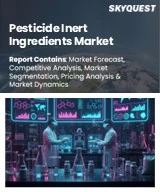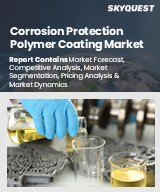
|
시장보고서
상품코드
1647749
세계의 비양성자성 용매 시장 보고서 : 동향, 예측, 경쟁 분석(-2031년)Aprotic Solvent Market Report: Trends, Forecast and Competitive Analysis to 2031 |
||||||
세계 비양성자성 용매 시장의 미래는 화학, 헬스케어, 석유 및 가스, 전자제품 시장에서의 기회로 인해 유망합니다. 세계 비양성자성 용매 시장은 2025-2031년간 5.3%의 연평균 복합 성장률(CAGR)로 성장하여 2031년 약 276억 달러에 달할 것으로 예상됩니다. 이 시장의 주요 촉진요인은 환경 관련 법규의 강화, 제약 산업의 급속한 발전, 제조 기술의 눈부신 발전, 향료를 포함한 소비재 수요 증가, 연구 개발 비용의 대폭적인 증가입니다.
- Lucintel의 예측에 따르면, N-메틸-2-피롤리돈은 의약품의 합성, 추출, 정제에서 중요한 역할을 하기 때문에 예측 기간 동안 유형별로 가장 큰 부문을 차지할 것으로 예상됩니다. 또한, 높은 용해력은 다양한 약물 전구체 및 중간체의 용해에 도움이 됩니다.
- 지역별로는 중국, 일본, 인도, 한국 등 개발도상국의 비양성자성 용매에 대한 수요 증가와 건축 및 건설 산업의 성장으로 인해 APAC 지역이 예측 기간 동안 가장 규모가 큰 지역으로 남을 것으로 보입니다.
비양성자성 용매 시장의 전략적 성장 기회
비양성자성 용매 시장은 기술, 산업화 추세, 규제 변화 등으로 인해 몇 가지 전략적 성장 기회를 제시하고 있습니다. 이러한 성장 기회는 기업이 시장 진입을 강화하고 성장을 가속하는 데 도움이 될 수 있습니다.
- 신흥 시장 진출: 인도, 동남아시아 등 산업화와 생산 활동이 꾸준히 증가하고 있는 신흥 시장은 큰 성장 잠재력을 가지고 있습니다. 기업은 적절한 비양성자성 용매를 제공하고 현지 시장 수요에 맞추어 이들 시장으로의 진출을 확대할 수 있습니다.
- 친환경 용매 개발: 세계 트렌드와 규제 당국의 승인으로 친환경 비양성자성 용매 생산에 대한 투자가 촉진되고 있습니다. 친환경 용제 생산을 위한 신기술 개발에 투자하는 기업은 차별화를 꾀하고 환경에 민감한 고객에게 어필할 수 있습니다.
- 기능별 단위 순도 접근법 채택: 제약 및 전자 분야 수요 증가는 고순도 비양성자성 용매에 대한 기회를 창출할 수 있습니다. 기업들은 보다 광범위한 산업 및 특수 용도에 대응할 수 있는 고순도 용매 개발에 집중해야 합니다.
- 새로운 생산 기술 도입: 새로운 생산 기술의 도입은 비양성자성 용매의 생산 효율과 품질을 향상시킬 수 있습니다. 첨단 장비와 공정에 투자하는 기업은 제품 성능 향상과 비용 절감에 중점을 둡니다.
- 규제 준수 강화에 대한 책임: 엄격한 안전 규정과 컴플라이언스 규정의 시행은 이 시장의 기업들에게 성장의 기회가 될 수 있습니다. 세계 표준을 철저히 준수함으로써 기업은 고객의 신뢰를 쌓고 새로운 시장 기회를 창출할 수 있습니다.
이러한 성장 기회는 비양성자성 용매 부문에서 시장 성장과 차별화를 실현할 수 있는 틈새 시장을 부각시킵니다. 신흥 경제국을 포용하고, 친환경 기술을 개발하며, 효과적인 규제 준수를 보장함으로써 기업은 큰 성장 잠재력을 이끌어 낼 수 있습니다.
비양성자성 용매 시장 성장 촉진요인 및 과제
비양성자성 용매 시장은 기술, 규제, 시장 구조 및 경쟁을 포함한 경제적 요인 등 여러 가지 촉진요인 및 과제에 의해 형성됩니다. 이러한 요소들을 이해하는 것은 시장 내에서 성공하기 위해 매우 중요합니다.
비양성자성 용매 시장 성장 촉진요인은 다음과 같습니다.
- 기술 혁신 : 새로운 용매 시스템 및 생산 공정의 개발이 시장 성장에 기여하고 있습니다. 비양성자성 용매의 성능, 순도 및 효율이 향상됨에 따라 다양한 응용 분야에서 비양성자성 용매가 더 선호되고 있습니다.
- 산업계 수요 증가: 제약, 전자, 화학 등 산업계 수요 증가는 비양성자성 용매 시장의 성장을 견인하고 있습니다. 이러한 분야에서는 새로운 고성능 용매가 필요하기 때문에 이러한 수요는 더 많은 성장 기회를 창출하고 있습니다.
- 지속 가능한 개발을위한 규제 압력 : 환경 규제 강화로 인해보다 환경 친화적 인 비양성자성 용매의 생산이 촉진되고 있습니다. 기업들은 법을 준수하고 사회의 기대에 부응하기 위해 환경 친화적 인 솔루션으로 눈을 돌리고 있습니다.
- 신흥국에서의 성장: 신흥국의 산업화와 제조업 증가는 비양성자성 용매 시장에 큰 성장 잠재력을 가져다주고 있습니다. 각 기업들은 이러한 지역을 공략하여 수요 증가에 따른 새로운 경제적 기회를 활용하고자 합니다.
- 제품 개발에 집중: 시장은 더 나은 안정성과 다기능성 등 개선된 기능을 갖춘 첨단 비양성자성 용매에 대한 수요 증가에 의해 주도되고 있습니다. 어떤 산업 분야든 변화하는 것이 기업의 경쟁력을 유지하는 데 도움이 됩니다.
비양성자성 용매 시장의 과제는 다음과 같습니다.
- 원료 가격 변동: 원료 가격 변동: 특히 조잡한 아프로톤계 용매의 원료 가격 변동은 생산 비용과 가격 책정을 복잡하게 만듭니다. 수익성을 유지하고 시장을 안정화하기 위해서는 이러한 문제를 관리하는 것이 매우 중요합니다.
- 규제 준수 비용: 엄격한 환경 및 산업 안전 기준을 준수하는 데는 비용이 듭니다. 소송을 피하고 시장 진입을 달성하기 위해서는 규정 준수에 투자해야 합니다.
- 치열한 시장 경쟁: 비양성자성 용매 시장은 경쟁이 치열하고 많은 기업이 유사한 제품을 제공합니다. 고객을 확보하기 위한 가장 중요한 전략 중 하나는 새로운 기능, 고품질, 우수한 서비스로 제품을 차별화하는 것입니다.
이러한 촉진요인과 과제는 시장 기회와 경쟁 수준을 결정함으로써 비양성자성 용매 산업에 영향을 미칩니다. 원료 비용 문제를 해결하고, 규제 준수 위험을 해결하고, 증가하는 경쟁 동향에 대응하는 것은 끊임없이 변화하는 이 산업에서 살아남기 위해 필수적입니다.
목차
제1장 주요 요약
제2장 세계의 비양성자성 용매 시장 : 시장 역학
- 서론, 배경, 분류
- 공급망
- 업계 촉진요인과 과제
제3장 시장 동향과 예측 분석(2019-2031년)
- 거시경제 동향(2019-2024년)과 예측(2025-2031년)
- 세계의 비양성자성 용매 시장 동향(2019-2024년)과 예측(2025-2031년)
- 세계의 비양성자성 용매 시장, 공급원별
- 바이오
- 합성
- 세계의 비양성자성 용매 시장, 유형별
- N-Methyl-2-Pyrrolidone
- Chloroform
- Benzene
- 세계의 비양성자성 용매 시장, 최종 용도별
- 화학제품
- 헬스케어
- 석유 및 가스
- 전자
- 기타
제4장 시장 동향과 예측 분석(2019-2031년), 지역별
- 세계의 비양성자성 용매 시장, 지역별
- 북미의 비양성자성 용매 시장
- 유럽의 비양성자성 용매 시장
- 아시아태평양의 비양성자성 용매 시장
- 기타 지역의 비양성자성 용매 시장
제5장 경쟁 분석
- 제품 포트폴리오 분석
- 운영 통합
- Porter의 Five Forces 분석
제6장 성장 기회와 전략 분석
- 성장 기회 분석
- 세계의 비양성자성 용매 시장 성장 기회, 공급원별
- 세계의 비양성자성 용매 시장 성장 기회, 유형별
- 세계의 비양성자성 용매 시장 성장 기회, 최종 용도별
- 세계의 비양성자성 용매 시장 성장 기회, 지역별
- 세계 비양성자성 용매 시장의 새로운 동향
- 전략 분석
- 신제품 개발
- 세계의 비양성자성 용매 시장 생산능력 확대
- 세계의 비양성자성 용매 시장에서의 인수합병(M&A) 및 합작투자(JV)
- 인증과 라이선싱
제7장 주요 기업 개요
- BASF
- Dow DuPont
- Eastman Chemical
- INEOS
- Mitsui Chemicals
- Shell International
- Asahi Kasei
- Ashland
- AlzChem
- Celanese
The future of the global aprotic solvent market looks promising with opportunities in the chemical, healthcare, oil & gas, and electronic markets. The global aprotic solvent market is expected to reach an estimated $27.6 billion by 2031 with a CAGR of 5.3% from 2025 to 2031. The major drivers for this market are growing environmental laws, the pharmaceutical industry's rapid development, notable advancements in manufacturing technology, increasing demand for consumer goods, including fragrances, and significant R&D expenditures.
- Lucintel forecasts that, within the type category, N-methyl-2-pyrrolidone will remain the largest segment over the forecast period because it plays a crucial role in drug synthesis, extraction, and purification. Additionally, its high solvency power helps dissolve various drug precursors and intermediates.
- In terms of regions, APAC will remain the largest region over the forecast period due to rising demand in developing nations, including China, Japan, India, and South Korea, for aprotic solvents, as well as the growing building and construction industry.
Gain valuable insights for your business decisions with our comprehensive 150+ page report.
Emerging Trends in the Aprotic Solvent Market
This statement means that this particular market is emerging in contrast to its traditional concept, and this is happening with the inclusion of several invincible emerging trends within the internal parameters of the market. These trends are driving vigorous and innovative performance, particularly in terms of environmental and other performance aspects.
- Expansion of the Usage of Green Solvents: Efforts are being made to synthesize solvents that are more sustainable than most of the solvents present in the market today. Companies are implementing policies to promote the development of such solvents, which will lower toxicity levels in the environment, foster reduced solvent use in industries, and hence decrease the environmental impact.
- Advancements in Production Technologies: Enhancing the production processes of aprotic solvents improves their efficiency and purity. These improvements allow for the introduction of new, high-performance solvents with better stability and fewer contaminants, making them suitable for various industries.
- Rising Demand from Pharmaceuticals and Electronics: The need for high-purity aprotic solvents is being driven by the pharmaceutical and electronics industries. These industries require specific types of solvents for drug production and electronics manufacturing, which expands the market and fosters innovative developments.
- Regulatory Pressure for Safety and Compliance: The development of aprotic solvents is being influenced by increasing demand for safer and more regulatory-compliant solvents. Many industries are required to meet high safety standards and minimize pollution levels to ensure their products are approved for market entry.
- Development of Multi-Functional Solvents: There is a growing trend toward the development of multi-functional aprotic solvents, which improve the range of their usefulness. These solvents serve multiple functions in industrial operations, reducing the need for various types of solvents, and thus enhancing productivity.
These trends are transforming the aprotic solvent market by encouraging pragmatism, improving eco-friendliness, and broadening usage. The increasing market orientation toward eco-friendly solvents, advancements in production technologies, and growth of key solvent-consuming industries are guiding the market's forward path.
Recent Developments in the Aprotic Solvent Market
The recent trends in the aprotic solvent market highlight the demand for innovation and efficiency, driven primarily by changes in technology, regulations, and wider industry usage. These developments are shaping the market's evolution in many ways and offering solutions to emerging gaps.
- Advancement in Green Solvents: The trend toward promoting green aprotic solvents is gaining traction. Industries are focusing on producing solvents that are environmentally friendly by utilizing greener processes and materials that comply with upcoming legal requirements and clients' needs.
- Enhanced Purity and Efficiency: Production technologies are improving the purity and efficiency of aprotic solvents. New high-purity organic solvents with greater stability and efficiency are being developed for demanding applications in pharmaceuticals and electronics.
- Regulatory Compliance: Companies are responding to increased safety and environmental requirements. Recent advancements include the reformulation of solvents to meet international standards, ensuring that products are not only legal but also environmentally friendly
- Growth Opportunities in Emerging Markets: The demand for aprotic solvents is forecast to grow, driven by expansion in new markets, including India and Southeast Asia. With improvements in production, many companies are venturing into these regions by offering low-cost services and adapting to local production requirements.
- Innovations in Manufacturing Technologies: New developments in manufacturing technologies are enhancing the efficiency of aprotic solvents production. Innovative processes and tools are being introduced to improve solvent quality and reduce production costs.
These trends are transforming the aprotic solvent market through better products, adherence to legislative requirements, and expanded market reach. The emphasis on eco-friendly solvents, technology integration, and the growth of new markets is introducing fresh ideas and changing the course of the industry.
Strategic Growth Opportunities for Aprotic Solvent Market
The aprotic solvent market presents several strategic growth opportunities, driven by technology, industrialization trends, and changing regulations. Such opportunities can help businesses enhance their market reach and foster growth.
- Expansion into Emerging Markets: Emerging markets, such as India and Southeast Asia, where industrialization and manufacturing activities are steadily increasing, present enormous growth prospects. Companies can expand their reach in these markets by providing suitable aprotic solvents and aligning with local market demands.
- Development of Eco-Friendly Solvents: Global trends and regulatory endorsements are pushing investment in the production of green aprotic solvents. Companies that invest in developing new technologies for manufacturing green solvents can differentiate themselves and appeal to environmentally conscious customers.
- Embracing Cross-Functional Unit-Purity Approaches: The growing demand from pharmaceutical and electronic sectors creates opportunities for high-purity aprotic solvents. Companies should focus on developing solvents with high purity, enabling them to serve a broader range of industries and specialized applications.
- Implementation of Novel Production Techniques: Adopting novel production techniques will enhance the efficiency and quality of aprotic solvent production. Companies that invest in sophisticated equipment and processes will focus on improving product performance and reducing costs.
- Liability of Enhanced Regulation Compliance: Enforcing stringent safety and compliance regulations can become a growth opportunity for companies in this market. By ensuring adherence to global standards, businesses can build customer confidence and open new market opportunities.
These growth opportunities highlight niches for capturing market growth and differentiation within the aprotic solvent sector. By embracing new economies, developing green technologies, and ensuring effective regulatory compliance, businesses can unlock significant growth potential.
Aprotic Solvent Market Driver and Challenges
The aprotic solvent market has been shaped by several drivers and challenges, such as technological, regulatory, and economic factors, including market structure and competition. Understanding these elements is crucial for successfully maneuvering within the market.
The factors responsible for driving the aprotic solvent market include:
- Technological Innovations: The development of new solvent systems and production processes contributes to the market's growth. The increased performance, purity, and efficiency of aprotic solvents make them more desirable in various fields of application.
- Increasing Demand from Industries: Growing demand from industries such as pharmaceuticals, electronics, and chemicals is driving the growth of the aprotic solvent market. This demand creates opportunities for further growth, as new high-performance solvents are needed in these sectors.
- Regulatory Pressure for Sustainable Development: Stricter environmental regulations are facilitating the production of greener aprotic solvents. Corporations are turning to eco-friendly solutions in order to comply with the law and meet societal expectations.
- Growth in Developing Economies: Increasing industrialization and manufacturing in developing economies provide significant growth potential for the aprotic solvent market. Companies are targeting these regions, hoping to capitalize on emerging economic opportunities as demand rises.
- Focus on Product Development: The market is being driven by the growing demand for advanced aprotic solvents with improved features, including better stability and multi-functional capabilities. Change is the order of the day in any industrial sector, which helps companies stay competitive.
Challenges in the aprotic solvent market include:
- Raw Material Price Volatility: The variability of raw material costs, particularly for crude aprotic solvents, complicates production costs and pricing. It is crucial to manage these issues to maintain profitability and stabilize the market.
- Regulatory Compliance Costs: Compliance with strict environmental and occupational safety standards is expensive. Organizations must invest in compliance to avoid litigation and gain market access, or else profit margins will be constrained.
- Intense Market Competition: The aprotic solvent market is highly competitive, with many players offering similar products. One of the most important strategies for winning customers is differentiating products through new features, higher quality, and excellent service.
These drivers and challenges influence the aprotic solvent industry by determining market opportunities and the level of competition. Resolving issues related to raw material costs, addressing regulatory compliance risks, and handling growing competition trends are critical for survival in this ever-changing industry.
List of Aprotic Solvent Companies
Companies in the market compete on the basis of product quality offered. Major players in this market focus on expanding their manufacturing facilities, R&D investments, infrastructural development, and leverage integration opportunities across the value chain. Through these strategies aprotic solvent companies cater increasing demand, ensure competitive effectiveness, develop innovative products & technologies, reduce production costs, and expand their customer base. Some of the aprotic solvent companies profiled in this report include-
- BASF
- Dow DuPont
- Eastman Chemical
- INEOS
- Mitsui Chemicals
- Shell International
- Asahi Kasei
- Ashland
- AlzChem
- Celanese
Aprotic Solvent by Segment
The study includes a forecast for the global aprotic solvent market by source, type, end use, and region.
Aprotic Solvent Market by Source [Analysis by Value from 2019 to 2031]:
- Bio-Based
- Synthetic
Aprotic Solvent Market by Type [Analysis by Value from 2019 to 2031]:
- N-Methyl-2-Pyrrolidone
- Chloroform
- Benzene
Aprotic Solvent Market by End Use [Analysis by Value from 2019 to 2031]:
- Chemical
- Healthcare
- Oil & Gas
- Electronic
- Others
Aprotic Solvent Market by Region [Analysis by Value from 2019 to 2031]:
- North America
- Europe
- Asia Pacific
- The Rest of the World
Country Wise Outlook for the Aprotic Solvent Market
The aprotic solvent market is undergoing dramatic transformations regarding technological changes, regulations, and industrial applications. This market is fueled by the increasing need for new solvent formulations and innovations, leading to strong growth in sectors such as pharmaceuticals, chemicals, and electronics.
- United States: In the U.S., the aprotic solvent market is in an emerging stage, where more formulation products are being developed to enhance safety and efficiency. These developments are making it mandatory to formulate new solvents that are environmentally friendly. Industries that produce high-purity solvents are seeing strides in production, driven by the demand from the pharmaceutical and electronic sectors.
- China: Due to growing industrialization and an expanding manufacturing base, the Aprotic Solvent market in China is growing at a rapid pace. Recent advances include improvements in production technology and a reduction in environmental hazards associated with the use of solvents. The focus is on enhancing efficiency and ensuring the safety of equipment to meet international quality assurance standards.
- Germany: Germany leads in the incorporation of emerging, affordable, and yield-efficient aprotic solvent components with advanced safety features. These advances include the development of novel green solvents and technologies to increase their potency in manufacturing processes. Germany's strong regulatory framework ensures safety and quality compliance in the use of industrial solvents.
- India: India is investing in Indenes and Aprotic Solvents economically. The growth of the pharmaceutical and chemical industries is driving the increasing demand for Aprotic Solvents in India. New technologies are accelerating production and improving the formulation of solvents, surpassing the effectiveness of current solutions. Emphasis is placed on adhering to and exceeding both local and global market requirements.
- Japan: Japan's aprotic solvent market is characterized by high-tech innovations and a focus on performance and safety. Advances include solvent technologies that enhance both performance and safety. Japan is also engaging in research to eliminate the use of toxic and inefficient solvents in industrial applications.
Features of the Global Aprotic Solvent Market
Market Size Estimates: Aprotic solvent market size estimation in terms of value ($B).
Trend and Forecast Analysis: Market trends (2019 to 2024) and forecast (2025 to 2031) by various segments and regions.
Segmentation Analysis: Aprotic solvent market size by source, type, end use, and region in terms of value ($B).
Regional Analysis: Aprotic solvent market breakdown by North America, Europe, Asia Pacific, and Rest of the World.
Growth Opportunities: Analysis of growth opportunities in different source, type, end use, and regions for the aprotic solvent market.
Strategic Analysis: This includes M&A, new product development, and competitive landscape of the aprotic solvent market.
Analysis of competitive intensity of the industry based on Porter's Five Forces model.
If you are looking to expand your business in this or adjacent markets, then contact us. We have done hundreds of strategic consulting projects in market entry, opportunity screening, due diligence, supply chain analysis, M & A, and more.
This report answers following 11 key questions:
- Q.1. What are some of the most promising, high-growth opportunities for the aprotic solvent market by source (bio-based and synthetic), type (N-methyl-2-pyrrolidone, chloroform, and benzene), end use (chemical, healthcare, oil & gas, electronic, and others), and region (North America, Europe, Asia Pacific, and the Rest of the World)?
- Q.2. Which segments will grow at a faster pace and why?
- Q.3. Which region will grow at a faster pace and why?
- Q.4. What are the key factors affecting market dynamics? What are the key challenges and business risks in this market?
- Q.5. What are the business risks and competitive threats in this market?
- Q.6. What are the emerging trends in this market and the reasons behind them?
- Q.7. What are some of the changing demands of customers in the market?
- Q.8. What are the new developments in the market? Which companies are leading these developments?
- Q.9. Who are the major players in this market? What strategic initiatives are key players pursuing for business growth?
- Q.10. What are some of the competing products in this market and how big of a threat do they pose for loss of market share by material or product substitution?
- Q.11. What M&A activity has occurred in the last 5 years and what has its impact been on the industry?
Table of Contents
1. Executive Summary
2. Global Aprotic Solvent Market : Market Dynamics
- 2.1: Introduction, Background, and Classifications
- 2.2: Supply Chain
- 2.3: Industry Drivers and Challenges
3. Market Trends and Forecast Analysis from 2019 to 2031
- 3.1. Macroeconomic Trends (2019-2024) and Forecast (2025-2031)
- 3.2. Global Aprotic Solvent Market Trends (2019-2024) and Forecast (2025-2031)
- 3.3: Global Aprotic Solvent Market by Source
- 3.3.1: Bio-Based
- 3.3.2: Synthetic
- 3.4: Global Aprotic Solvent Market by Type
- 3.4.1: N-Methyl-2-Pyrrolidone
- 3.4.2: Chloroform
- 3.4.3: Benzene
- 3.5: Global Aprotic Solvent Market by End Use
- 3.5.1: Chemical
- 3.5.2: Healthcare
- 3.5.3: Oil & Gas
- 3.5.4: Electronic
- 3.5.5: Others
4. Market Trends and Forecast Analysis by Region from 2019 to 2031
- 4.1: Global Aprotic Solvent Market by Region
- 4.2: North American Aprotic Solvent Market
- 4.2.1: North American Market by Type: N-Methyl-2-Pyrrolidone, Chloroform, and Benzene
- 4.2.2: North American Market by End Use: Chemical, Healthcare, Oil & Gas, Electronic, and Others
- 4.3: European Aprotic Solvent Market
- 4.3.1: European Market by Type: N-Methyl-2-Pyrrolidone, Chloroform, and Benzene
- 4.3.2: European Market by End Use: Chemical, Healthcare, Oil & Gas, Electronic, and Others
- 4.4: APAC Aprotic Solvent Market
- 4.4.1: APAC Market by Type: N-Methyl-2-Pyrrolidone, Chloroform, and Benzene
- 4.4.2: APAC Market by End Use: Chemical, Healthcare, Oil & Gas, Electronic, and Others
- 4.5: ROW Aprotic Solvent Market
- 4.5.1: ROW Market by Type: N-Methyl-2-Pyrrolidone, Chloroform, and Benzene
- 4.5.2: ROW Market by End Use: Chemical, Healthcare, Oil & Gas, Electronic, and Others
5. Competitor Analysis
- 5.1: Product Portfolio Analysis
- 5.2: Operational Integration
- 5.3: Porter's Five Forces Analysis
6. Growth Opportunities and Strategic Analysis
- 6.1: Growth Opportunity Analysis
- 6.1.1: Growth Opportunities for the Global Aprotic Solvent Market by Source
- 6.1.2: Growth Opportunities for the Global Aprotic Solvent Market by Type
- 6.1.3: Growth Opportunities for the Global Aprotic Solvent Market by End Use
- 6.1.4: Growth Opportunities for the Global Aprotic Solvent Market by Region
- 6.2: Emerging Trends in the Global Aprotic Solvent Market
- 6.3: Strategic Analysis
- 6.3.1: New Product Development
- 6.3.2: Capacity Expansion of the Global Aprotic Solvent Market
- 6.3.3: Mergers, Acquisitions, and Joint Ventures in the Global Aprotic Solvent Market
- 6.3.4: Certification and Licensing
7. Company Profiles of Leading Players
- 7.1: BASF
- 7.2: Dow DuPont
- 7.3: Eastman Chemical
- 7.4: INEOS
- 7.5: Mitsui Chemicals
- 7.6: Shell International
- 7.7: Asahi Kasei
- 7.8: Ashland
- 7.9: AlzChem
- 7.10: Celanese
(주말 및 공휴일 제외)









